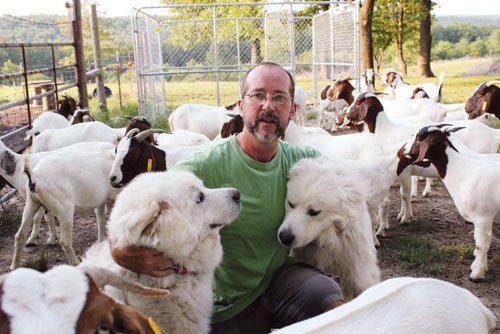Waterwheels
The use of waterwheels to free human beings from heavy labor is almost as ancient as the use of draft animals. The earliest applications of such wheels were to raise water from wells and to turn millstones to grind grain.
Later, waterwheels were adapted to provide power for other processes to which a slow, ponderous, unceasing rotary motion was suited. In early America, textile factories and sawmills were generally built on riverbanks to take advantage of waterpower.
A personal hydroelectric power source has the potential to sustain every household energy need and provide an unexcelled level of independence.
Having enough water flow is less a problem than one might imagine, particularly in hilly areas where hundreds of thousands of potential hydroelectric sites remain untapped.
With a drop of 50 feet from water source to turbine, for example, a brook small enough for a child to jump across can provide enough power for a single family dwelling.
Just remember this, the smaller the installation, the higher will be the cost for each kilowatt generated.
Scaled against the cost of power from a public utility, it may be 5 to 7 years before a small installation pays back its initial expense, though rising fuel costs may substantially shorten the payback period.
Modern Waterpower Systems
Waterpower achieves its greatest usefulness when it is converted into electricity. Lighting fixtures, heating systems, small appliances, cooking ranges, and machinery of all sorts are some of the common applications. The coversion is made possible by electrical generators that transform rotary motion into electric current.
Though not originally designed for the purpose, old fashioned waterwheels can actually be used to run generators, but not without overcoming a major obstacle: electrical generators do not operate efficiently except at high speeds, on the order of 1,500 revolutions per minute. To reach these speeds, a large step up in the waterwheel's rate of rotation is required, somewhere in the vicinity of 100 to 1. Wooden gears simply will not work, friction alone would destroy them.
Instead, rugged, well made gears or pulleys are required that are not only highly efficient but also capable of handling the huge forces present in the shaft of a whaterwheel. Heavy duty tractor transmissions have been adapted for the purpose and can provide several years of service. The design and construction of a system that will last 20 years or more calls for a high level of mechanical ingenuity plus persistence and luck in finding the appropriate used or abandoned equipment.
Gearing problems can be circumvented by using a turbine instead of a waterwheel. Turbines are devices that convert water flow directly into high speed turning motion. Little in the way of supplementary gearing is needed to achieve generator speeds. In addition, turbines are much smaller than waterwheels of the same power output, hardly larger than the generators with which they are coupled.
Turbines run with a high pitched whine, not as soothing as the rumble and splash of the old mill whieel, and some are subject to cavitation (wear caused by air bubbles).
Before you buy a turbine, you should measure the characteristics of your stream, particularly it head, so you can match the turbine to them.
Head is the vertical drop the water makes from the point where it is diverted from the stream to the point at which it reaches the power generating equipment.
Pelton wheels perform best under high head conditions; propeller turbines, the reverse. Flow is the volume of water carried by the stream past a stationary point each second and is also a factor in turbine design.







